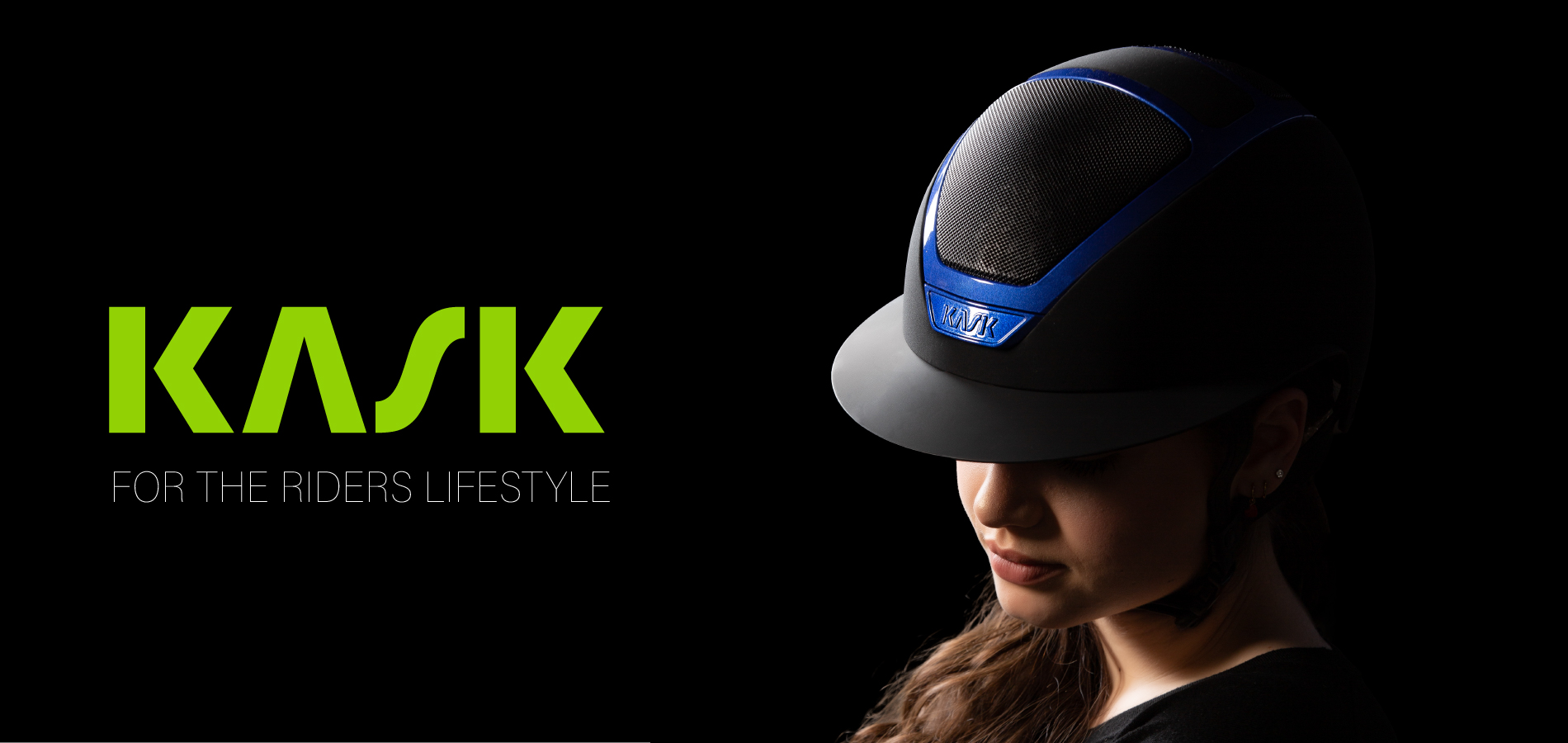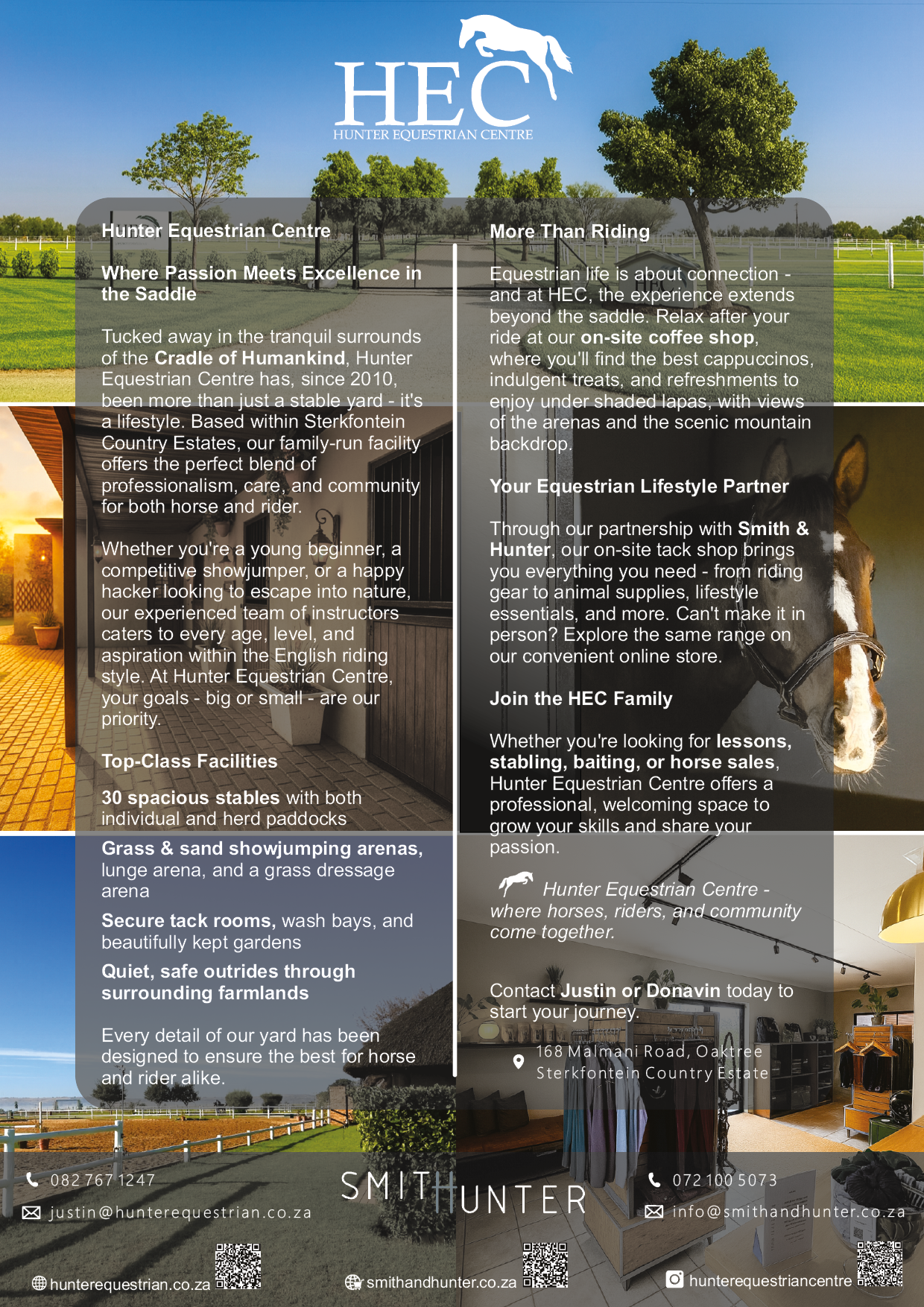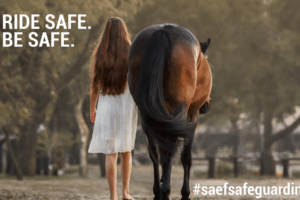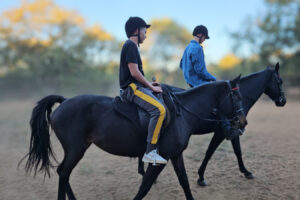Why equitation is all about finesse, feel and forming the perfect partnership.
Equitation is a discipline that places the rider at the heart of the performance. While many equestrian sports focus on the ability of the horse, equitation is about how the rider influences and manages their horse, creating a picture of balance, effectiveness and quiet communication. It celebrates correct riding technique and sets the foundation for future success in other disciplines.
As Yvonne Bolton, who many view as the face of Equitation in South Africa explains, “Equitation is about the rider’s skill and how they bring out the best in their horse. It’s less about the horse’s natural ability and more about the harmony and understanding between horse and rider.”
This focus on the rider makes equitation both a rewarding challenge and an essential stepping stone for those aiming to compete at higher levels.
The origins of equitation in South Africa
Equitation was introduced to South Africa in the 1970s by Mrs Charlotte Stubbs. Having spent time in America, she was inspired by the equitation classes she saw there, especially under the guidance of George Morris, the renowned US Olympic coach. Her goal was to help improve local riding standards and to provide a system that would build technically correct and effective riders from the grassroots up.
“When Mrs Stubbs brought equitation to South Africa, it was about laying down a foundation of correct, classical riding. That vision remains at the heart of equitation today. It’s about building a strong base before specialising,” says Yvonne.
Since then, equitation has grown steadily, nurturing countless young riders and feeding into South Africa’s broader equestrian talent pool. Today, many of the country’s top show jumpers and eventers began their journeys in equitation, highlighting the discipline’s vital role as a development tool.
The format and rules of competition
Equitation competitions are divided into multiple parts, designed to test a rider’s control, position, and overall effectiveness in both flatwork and jumping.
Part one focuses on flatwork and schooling. Riders are required to perform various flatwork movements and a small jumping exercise. The purpose here is to assess the rider’s seat, leg, and hand position, and more importantly, their influence over the horse. Judges look for correct aids, balance and the subtle application of skills that make riding look effortless.
Part two involves a straightforward showjumping round, usually consisting of six to eight fences. Unlike traditional showjumping, this round is not timed. Instead, it is judged on rhythm, accuracy, and the rider’s ability to present a smooth, harmonious round. The aim is to see how the rider can adjust to the course and manage the horse with finesse.
In higher-level competitions, such as Intermediate and Open classes, there is also a part three. Here, the top riders return to complete an additional test combining flatwork and jumping. In Open classes, riders also swap horses. This is a uniquely South African feature that truly tests a rider’s adaptability and skill, demonstrating that they can ride any horse effectively, not just their own familiar partner.
Part four, used at championships, pushes this even further. The top two riders each ride a new horse they have not ridden before during the event. This final phase is the ultimate test of horsemanship and showcases the rider’s true ability to adapt and connect quickly with a new mount.
What the judges want to see
Judges in equitation are looking for a rider who can create a harmonious picture with their horse, showing clear influence and control without visible effort.
On the flat, the ideal rider has a correct, classical position: a straight line from ear to shoulder to hip to heel, relaxed elbows, and hands that maintain a soft, steady contact. Over fences, the rider should stay balanced, maintaining a flat back, heels down, and allowing the horse to jump freely by folding at the hips. The rider should never lean ahead of the horse’s jump or lose connection.
The concept of “effectiveness” is crucial. According to Yvonne, judges value riders who can plan their course, make necessary adjustments during the ride, and manage unexpected challenges without fuss.
As riders progress through the levels, they are expected to demonstrate increasing precision. In Open classes, judges want to see the horse on the bit, correct bend, and an overall impression of lightness and ease. Each part is scored out of 20, with deductions for errors such as knocked poles or refusals. The rider with the highest overall score wins, but the journey of improvement and feedback is at the heart of equitation.
Turnout and preparation tips
In equitation, first impressions count. Riders should present themselves smartly and traditionally: a black, navy or tweed jacket, white or pale shirt with a tie or American-style (polo-style show shirt) shirt, beige, stone or white jodhpurs, and well-polished black or brown boots. Hair should be neatly secured, gloves are preferable, and spurs must be the correct length if worn.
Horses should be clean, neatly plaited, with tack in perfect condition and properly fitted. A smart, well-turned-out rider and horse combination suggests respect for the discipline and the judges, and can give a psychological boost to the competitor.
Practical tips include arriving early, knowing your test thoroughly (even if it is called), and taking time to plan your ride carefully. The test should flow smoothly, with a clear progression from the flatwork to the jumping. Riders are encouraged to walk the course as they plan to ride it and to consider how best to present each movement to the judges.
The Philip Smith Memorial Equitation Championship
Among the many highlights of the South African equitation calendar, the Philip Smith Memorial Equitation Championship stands out as a prestigious event that every young rider dreams of attending.
Named in honour of Philip Smith, a brilliant rider and stylist (ridden) who represented South Africa on many occasions, this championship is a tribute to his passion for equitation and his belief in the importance of technically correct riding.
The competition invites the top four finalists from the National Junior Individual Equitation Championship to take part. On the first day, riders perform a flatwork test on their own horse and then on each of the other three horses, testing their ability to adapt and influence different horses. On the second day, they complete a jumping phase, starting with a gymnastic exercise ridden with one hand and no stirrups, followed by a challenging course of nine fences set at 1.15m to 1.20m.
This format places significant emphasis on the rider’s skill rather than the horse’s talent. Riders must demonstrate fluency, composure, and the ability to produce correct schooling movements even on unfamiliar horses. The event has seen remarkable winners over the years, including Jonathan Clarke, Andrea Harrison, Lexi Stais and Kelly O’Connor.
The growth of equitation in South Africa
Since its introduction, equitation in South Africa has developed into a thriving community and a respected discipline in its own right. It has become a foundation for riders who go on to succeed in showjumping, eventing, and other competitive arenas.
Yvonne adds, “Equitation has an incredible way of shaping not just talented riders, but thoughtful horsepeople. It teaches patience, feel and responsibility, qualities that stay with you for life.”
Equitation is offered across all age groups and levels, from welcome classes for beginners to challenging Open classes that demand the highest level of precision and skill. The system is designed to encourage progression, with structured levels and the possibility of earning grading points to move up. Riders are not locked into one level and are encouraged to push themselves as they and their horses develop.
Importantly, equitation in South Africa continues to evolve. The inclusion of horse swaps in Open classes is a unique and defining feature that ensures riders are truly tested on their own merits. According to Yvonne Bolton, “Swapping horses in our top classes pushes riders to prove they can ride anything that comes their way. It’s a test of true horsemanship and mental toughness.”
The discipline has also become more inclusive, welcoming adult riders and encouraging participation at grassroots level through initiatives like the Little League and special entry-level tests. The goal is to make correct riding accessible to everyone and to foster a new generation of skilled, thoughtful horsemen and women.
Why everyone should give it a try
Equitation offers riders the chance to build a strong foundation, improve their riding skills, and deepen their partnership with their horse. Every competition is like a practical lesson, with judges providing detailed feedback that helps riders understand where they can improve.
It is an approachable and rewarding way to measure progress, identify weaknesses, and develop the poise and discipline that define a true horseperson. The skills learned in equitation translate into all other disciplines, making it an invaluable part of any rider’s journey.
As Yvonne Bolton beautifully sums it up, “Equitation gives you the tools to become a complete rider. It teaches you to listen, to adapt, and to truly connect with your horse. That’s something every rider should experience.”
If you’re inspired to explore the world of equitation, visit the South African Equitation Association at www.equitationsa.co.za and take the first step towards mastering the art of riding in harmony.

















